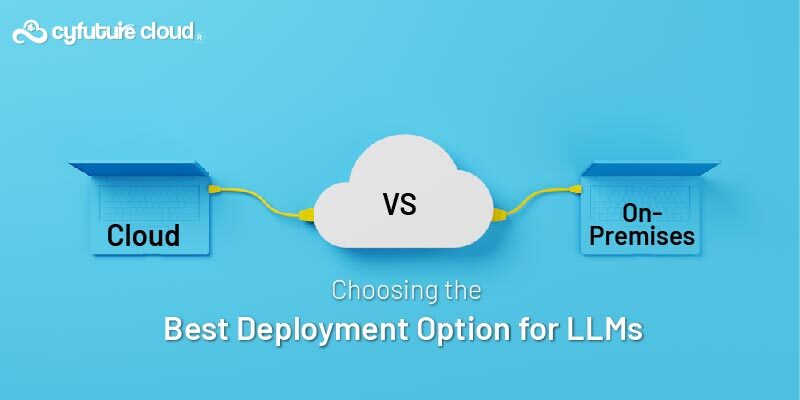Table of Contents
Cloud orchestration refers to the automation of tasks and processes related to the deployment, management, and maintenance of cloud-based IT resources. It involves coordinating the various components of a cloud environment, such as virtual machines, storage systems, networking infrastructure, and applications, to ensure that they work together seamlessly and efficiently.
Cloud orchestration helps organizations to optimize their use of cloud resources and streamline their IT operations. It enables them to automate the provisioning, configuration, and management of cloud resources, which can help to reduce the time and effort required to deploy and maintain complex cloud environments.
Cloud orchestration also enables organizations to respond quickly and easily to changing business needs. By automating the deployment and scaling of cloud resources, organizations can easily adjust to changes in demand or shifts in business priorities. In addition to improving efficiency and agility, cloud orchestration can also help organizations to reduce costs. By automating the provisioning and management of cloud resources, organizations can reduce the time and effort required to maintain their cloud environments, which can lead to cost savings.
Key Benefits of Cloud Orchestration
There are several key benefits to using cloud orchestration:
Improved efficiency: Cloud orchestration helps to automate repetitive tasks, such as the deployment and scaling of cloud resources, which can save time and reduce the risk of errors.
Enhanced agility: Cloud orchestration enables organizations to quickly and easily deploy and scale cloud resources in response to changing business needs.
Reduced costs: By automating the provisioning and management of cloud resources, organizations can reduce the time and effort required to maintain their cloud environments, which can lead to cost savings.
Improved reliability: Cloud orchestration helps to ensure that cloud resources are configured and deployed in a consistent and reliable manner, which can improve the overall reliability of an organization’s cloud environment.
Cloud orchestration involves the use of tools and platforms to automate the deployment, management, and maintenance of cloud-based IT resources. This can include tasks such as provisioning and configuring virtual machines, storage systems, networking infrastructure, and applications in a cloud environment.
One of the key benefits of cloud orchestration is improved efficiency. By automating repetitive tasks, organizations can save time and reduce the risk of errors. This can help to streamline IT operations and make it easier for organizations to deploy and manage complex cloud environments.
Features of Cloud Orchestration
The architecture of cloud orchestration systems typically includes the following components:
– Cloud provider platform: This is the underlying cloud computing platform that is being used, such as Amazon Web Services (AWS), Microsoft Azure, or Google Cloud Platform (GCP). The cloud provider platform provides the infrastructure and services that are being managed by the cloud orchestration system.
– Cloud orchestration tool: This is the software tool or platform that is used to automate and coordinate the tasks involved in deploying and managing cloud computing resources. Examples of cloud orchestration tools include Ansible, Terraform, AWS CloudFormation, Azure Resource Manager, and Google Cloud Deployment Manager.
– Configuration management tool: This is a tool that is used to manage the configuration of the resources that are deployed in the cloud. Configuration management tools allow users to define and automate the configuration of resources, and to ensure that the resources are consistent with the defined configurations.
– Monitoring platform: This is a tool or platform that is used to monitor the performance and usage of the resources that are deployed in the cloud. Monitoring tools allow users to track resource usage, identify potential issues, and take corrective action as needed.
– User interface: This is the interface that users interact with to define and execute tasks, monitor resources, and manage the cloud environment. The user interface can be a web-based interface, a command-line interface, or a combination of both.
Key Components and Their Functions Within Cloud Orchestration:
| Component | Function |
|---|---|
| Orchestration Tool | Manages and automates cloud resources, such as provisioning, configuration, and deployment. Common tools include Kubernetes, Terraform, Ansible, etc. |
| Virtual Machines | Provides virtualized computing resources like CPU, memory, storage, and networking for running applications. |
| Containers | Enables the packaging and deployment of applications along with their dependencies in lightweight, portable containers. Tools like Docker are used. |
| APIs | Interfaces that allow different cloud services and applications to communicate and interact with each other. |
| Service Catalog | A repository of available services and resources with defined specifications and configurations. |
| Automation Scripts | Scripts or code used to automate repetitive tasks, configurations, and deployments in the cloud environment. |
| Monitoring Tools | Monitors the performance, health, and utilization of cloud resources. Examples include Prometheus, Grafana, or cloud provider-specific monitoring services. |
| Load Balancers | Distributes incoming network traffic across multiple servers or resources to ensure optimal resource utilization and prevent overload. |
| Scalability Tools | Manages the ability of the system to handle increased workload by scaling resources up or down dynamically. |
| Security Measures | Implements security protocols, access controls, encryption, and compliance measures to safeguard cloud infrastructure and data. |
| Reporting and Logging | Collects, analyzes, and stores logs and data for auditing, troubleshooting, and performance optimization. |
How does Cloud Orchestration Work?
Cloud orchestration involves the use of tools and processes to automate and coordinate the tasks involved in deploying and managing cloud computing resources. These tasks can include provisioning and configuring virtual machines, containers, and other resources; deploying and scaling applications; monitoring resource usage; and managing access control. The process of cloud orchestration typically involves the following steps:
Define the resources and tasks that need to be automated: This may involve creating templates or scripts that define the specific resources and configurations that are needed, as well as the tasks that need to be performed.
Set up the cloud orchestration tool: This involves installing and configuring the cloud orchestration tool, and integrating it with the cloud provider or other systems as needed.
Execute the tasks and processes: The cloud orchestration tool can then be used to execute the tasks and processes that have been defined, such as provisioning and configuring resources, deploying applications, and monitoring resource usage.
Monitor and manage the resources: The cloud orchestration tool can be used to monitor the usage and performance of the resources that have been deployed, and to manage them as needed (e.g., scaling resources up or down, modifying resource configurations, etc.).
Architecture of Cloud Orchestration
The architecture of cloud orchestration systems typically includes the following components:
– Cloud provider platform: This is the underlying cloud computing platform that is being used, such as Amazon Web Services (AWS), Microsoft Azure, or Google Cloud Platform (GCP). The cloud provider platform provides the infrastructure and services that are being managed by the cloud orchestration system.
– Cloud orchestration tool: This is the software tool or platform that is used to automate and coordinate the tasks involved in deploying and managing cloud computing resources. Examples of cloud orchestration tools include Ansible, Terraform, AWS CloudFormation, Azure Resource Manager, and Google Cloud Deployment Manager.
– Configuration management tool: This is a tool that is used to manage the configuration of the resources that are deployed in the cloud. Configuration management tools allow users to define and automate the configuration of resources, and to ensure that the resources are consistent with the defined configurations.
– Monitoring platform: This is a tool or platform that is used to monitor the performance and usage of the resources that are deployed in the cloud. Monitoring tools allow users to track resource usage, identify potential issues, and take corrective action as needed.
– User interface: This is the interface that users interact with to define and execute tasks, monitor resources, and manage the cloud environment. The user interface can be a web-based interface, a command-line interface, or a combination of both.
More About Cloud Orchestration
Cloud orchestration involves the coordination of various components within a cloud environment, such as virtual machines, storage systems, networking infrastructure, and applications. It involves automating tasks related to the deployment, management, and maintenance of these resources. Cloud orchestration tools and platforms allow organizations to automate the provisioning, configuration, and management of cloud resources. This can include tasks such as creating and configuring virtual machines, setting up networking infrastructure, and deploying applications. Cloud orchestration can help organizations to optimize their use of cloud resources by automating the deployment and scaling of resources in response to changing business needs. It can also help to ensure that resources are used in a consistent and reliable manner, which can improve the overall reliability of an organization’s cloud environment.
There are several different types of cloud orchestration tools and platforms available, including open-source options like Ansible and Terraform, as well as commercial solutions like AWS CloudFormation and Azure Resource Manager. These tools offer a wide range of features and capabilities, including support for different cloud providers and programming languages, and the ability to automate complex workflows. Cloud orchestration can be used in a variety of different contexts, including infrastructure-as-a-service (IaaS), platform-as-a-service (PaaS), and software-as-a-service (SaaS). It can be particularly useful for organizations that rely on cloud-based IT resources to support their business operations.
Take Away
In conclusion, cloud orchestration is the process of automating and coordinating the tasks and processes involved in deploying and managing cloud computing resources. It involves the use of tools and processes to manage the deployment, scaling, and management of cloud resources in a way that is efficient and cost-effective. Cloud orchestration can help organizations to improve efficiency, reduce costs, and increase agility by automating tasks that would otherwise be done manually. It can also help to ensure that resources are used effectively, as it allows users to define and enforce policies for resource allocation and utilization. There are many different tools and platforms available for cloud orchestration, including open source tools such as ansible and Terraform, as well as proprietary tools offered by cloud providers such as Amazon Web Services (AWS), Microsoft Azure, and Google Cloud Platform (GCP).
Send this to a friend

 Server Colocation
Server Colocation CDN Network
CDN Network Linux Cloud Hosting
Linux Cloud Hosting Kubernetes
Kubernetes Pricing Calculator
Pricing Calculator
 Power
Power
 Utilities
Utilities VMware Private Cloud
VMware Private Cloud VMware on AWS
VMware on AWS VMware on Azure
VMware on Azure Service Level Agreement
Service Level Agreement 



















